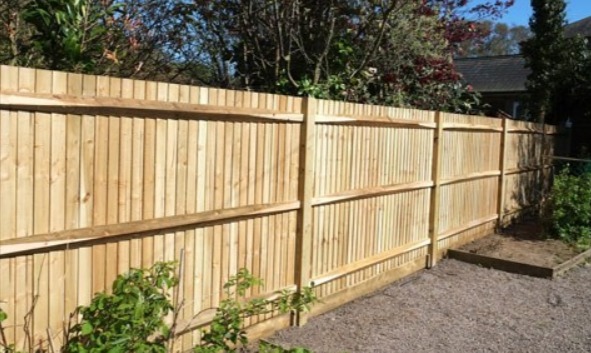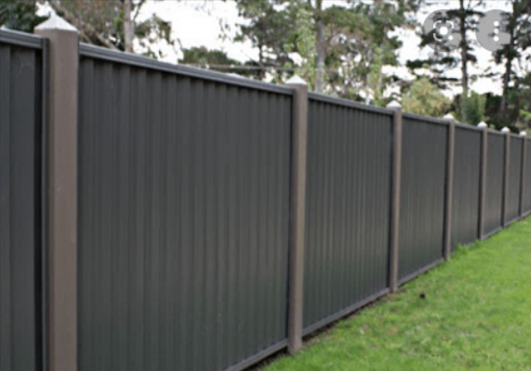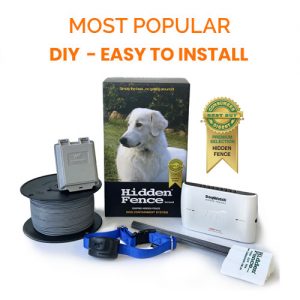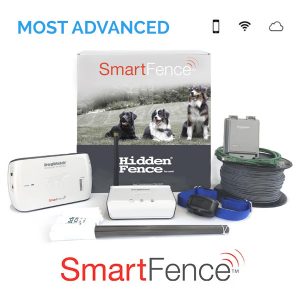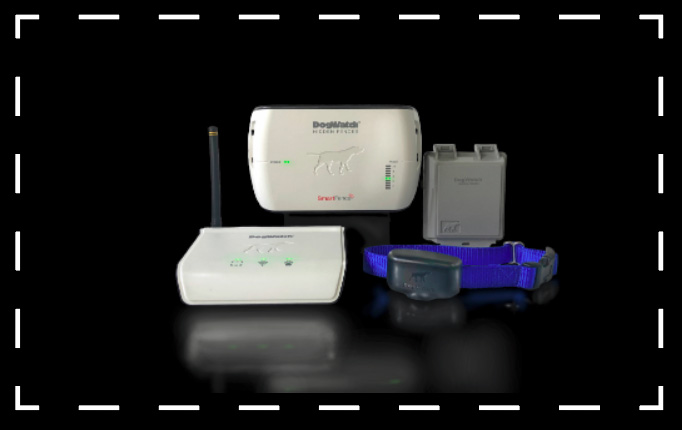With new invisible dog fence technology gone are the days when we allowed our dogs to roam freely throughout the neighbourhood, free from boundaries and fences. With ever-increasing urbanisation, responsible dog owners have had to address the need for dog fencing to keep their beloved pets safe. Traditionally, pet fences have been made from timber, wire or bricks, creating a boundary fence to keep dogs contained. These dog boundary fences do provide a somewhat effective barrier but still have their limitations.
Technology has provided an alternative to traditional dog boundary fencing. Hidden dog fences are now available as an effective containment system. These hidden dog fences are sometimes referred to as invisible or wireless fences as they are typically installed under the ground or on an existing structure, stealthily providing an almost virtual pet fence.
Appearance
To consider the difference between an invisible dog fence and a normal dog fence, we first need to consider their very obvious difference in appearance.
With traditional dog fencing, the fence is clearly visible and designates the boundary. A dog boundary fence typically sits on the perimeter of a property or alternatively sits between the front yard and the backyard, providing a degree of separation. Likewise, additional dog fencing is often used around the boundary of no go zones such as veggie gardens. These pet fences are clearly visible, often structurally imposing.
Here is a guide to your obligations when building a fence to keep your dog in
A “Hidden Fence” for dogs does exactly as the name suggests – it is hidden from sight. A hidden dog fence does not rely on creating a structural dog boundary to keep your pet contained. Rather, the dog boundary is created with the assistance of a coded radio signal.
To understand how this virtual fencing is created, it is useful to look at how a hidden fence for dogs is installed: A dog fence or boundary is created by installing a wire cable around the boundary of your property and any other designated zones. The most popular way to install this wire is to install it below ground level. Installing the wire below ground means the dog fence becomes truly hidden. The boundary is still designated while remaining cleverly hidden from sight. Your dog will know where the dog fence is because, via a receiver collar, they will receive radio signals warning them the dog boundary fence is imminent as they approach the fence. Some people call this a wireless fence because signals are created wirelessly.
Sometimes the hidden fence is installed on an existing structure. For example, many older properties have wire fences dividing the property. Historically, these fences have not been very high and could easily be jumped over by an exuberant dog. However, these wire fences are perfect for attaching the wire cable which helps form the boundary of a Hidden Fence system. The wire cable blends in with the wire on the existing dog fence, once again being effectively hidden from sight. Wire cables can also be installed on the railings of a wooden fence with maximum discretion while providing a very aesthetically pleasing containment system.
Note: In the initial training stage, flags are installed near the boundary to create a visual cue to your dog, warning them they are approaching the pet fence. After the initial training period, your dog understands where the dog boundary fence is and flags can then be removed.
Function
Hidden dog fences do more than mark the boundary line and provide containment. These innovative dog fences effectively have a “conversation” with your pet. When your dog gets too close to the wireless dog fence, the fence sends a wireless radio signal that implies, “Careful! You are getting too close to the boundary! Stay away!” If your dog ignores the warning signal and comes even closer, the wireless dog fence interacts with your dog and sends a harmless electrical stimulation that says, “I told you so! You shouldn’t be here! Go away!” This functionality of hidden fences is a clear benefit, providing ongoing prompts to your pet even when you are not at home.
In contrast to traditional dog fences, a wireless dog fence provides continuous monitoring of your dog’s location around your property. The wireless fence “knows” when your dog is getting too close to the boundaries you have designated, giving them gentle reminders when your dog forgets exactly where the pet fence is. After an initial training period, your dog comes to understand where the boundaries are and where they should or shouldn’t go. Initial training also involves visual cues and verbal reinforcement as your dog learns the parameters of the wireless fence.
Invisible dog fences can be configured in many different ways to send a message to your dog about permitted access. For example, your hidden dog fence can be configured around the full boundary of your home, around a partial boundary or exercise area or around exclusion zones such as pools, dams or an entrance area to the home.
Hidden fences also have the benefit of being portable. This is particularly desirable to pet owners who rent and don’t have permission to build a dog boundary fence. Hidden fences provide a very fast dog fencing solution without breaking the bank or upsetting your landlord.
Conclusion
When traditional dog fencing is not quite providing the outcome you are looking for, hidden dog fences provide an alternative with many additional benefits over the traditional dog fence. Hidden fences look better because you can’t see them and provide significant functionality options. If you are looking for an innovative pet fencing solution, give us a call or shoot us an email to find out how we can tailor a pet-friendly fencing solution for your dog. Click this link to contact Hidden Fence
Here are some of our products that will keep your dog or cat inside your boundary without a large fence.


